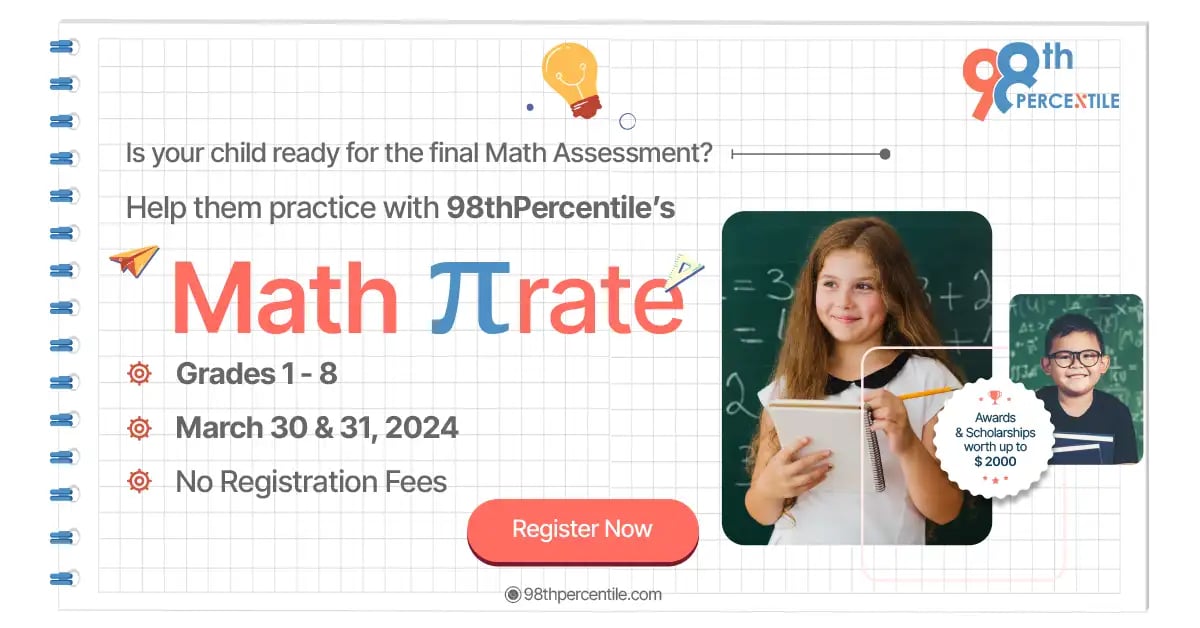Several variables have been identified as causing your children to struggle in Math, the most significant of which is their short attention spans. Most of you are aware that as children, we lacked the patience and attention span that we now have as adults. Focus is something we've developed over time via maturity and expertise.
Children's limited attention spans are the primary reason why we all found math to be tedious when we were younger. So let's look at some suggestions for helping youngsters focus better in math using Fun Math Activities.
Why to incorporate fun into Math learning?
Consider how not to overwhelm youngsters with too much Math instruction at once. If they go on to new duties without completing the prior ones, it is likely that they are stuck on them. So, basically, you need to divide the activities into smaller portions with a manageable schedule. Make their study time shorter in the beginning, and make sure you follow them throughout. This is the primary method of instruction and the foundation for all other enjoyable Math activities or tactics.
Math Techniques for Children to Enjoy Math While Learning
- Try math-related games- It might be beneficial if you attempt to educate them using entertaining activities. To do this, you should introduce your children to math games. Yes, a good Math game provides the appropriate amount of challenge for your youngster. You might begin with board and card games, such as Uno and Monopoly, to help children learn math. You may also get children involved with Math video games like Prodigy and Math is Fun. These activities are better suited for reviewing and practicing abilities rather than learning new ideas, however, the goal is to pique your child's interest in math. This can accomplish our primary objective of increasing your child's attention span and interest in the subject.
Join the Math Pirates! Start your adventure now!
- Fascinating Everyday Routines- You should aim to introduce the concept of math wherever and wherever feasible. Yes, you may use this while taking them to supermarkets or shopping malls and asking them to select the lowest cost item in a specific category or to purchase two coffees for each member of the family. Both of these procedures need Math. The first involves the idea of larger and lesser, whereas the second involves multiplication. While dealing with the bill, ask your youngster to calculate the amount and find the appropriate currency. Inquire as to the change you will receive. Such activities can raise their curiosity about the subject while also demonstrating the relevance of Math in daily life.
- Utilize Math Applications- A fundamental aspect that makes Math apps more successful than traditional education is a technique known as "direction at the point of learning." Yes, they provide kids instruction and feedback while they learn the material, rather than handing them a worksheet and then reviewing it later. Rather than waiting for a single teacher to answer, a Math tutoring app delivers rapid feedback. Math applications allow you to take your studies anywhere. Even if you're going from school to home, your youngster might cause some troubles in the car.
- Establish an Incentive System for Learning- This system should focus specifically on your child's daily practice. You might start with a limited time frame and ask them to do a modest activity inside it. Let them know that finishing the work on time will earn them prizes. Make the reward simple; it may be a toffee, movie tickets, or a trip to a local park, anything that piques your child's attention and motivates them to complete the assignment.
- Share Fun Facts About Math: There are plenty of fun and strange Math-related facts out there that will fascinate children of all ages. So if you can gather these facts and share them with your kid on a daily basis, they will develop a special interest in the discovery. For example, a number is divisible by three if the sum of its digits is divisible by three (3). Among all shapes with the same area, the circle has the shortest perimeter. These facts will arise a question in them. So they will go behind the explanation that proves it right and find an interest in this subject too.
As a parent, you should know that understanding Math from a young age is an essential part of building critical thinking skills for your child’s future. So try to implement these children’ Math tips and notice the change in their attitude and attention toward Math.
For more details, visit 98thPercentile. They offer Live, Online, K-12 Math, English (Reading & Writing), Public Speaking and Coding programs that are geared to get your child a GRADE AHEAD in just 5 months.
To get a hands-on experience of the 98thPercentile learning system,
Book 2-Week Math Trial Classes Now!

 Students/Staff
Students/Staff Parents
Parents ElevatEd
ElevatEd



-Nov-18-2025-03-57-47-3267-AM.png?width=360&length=360&name=401x226%20(6)-Nov-18-2025-03-57-47-3267-AM.png)



-Jul-22-2025-03-16-52-8797-AM.png?width=360&length=360&name=401x226%20(6)-Jul-22-2025-03-16-52-8797-AM.png)






